African painted dog
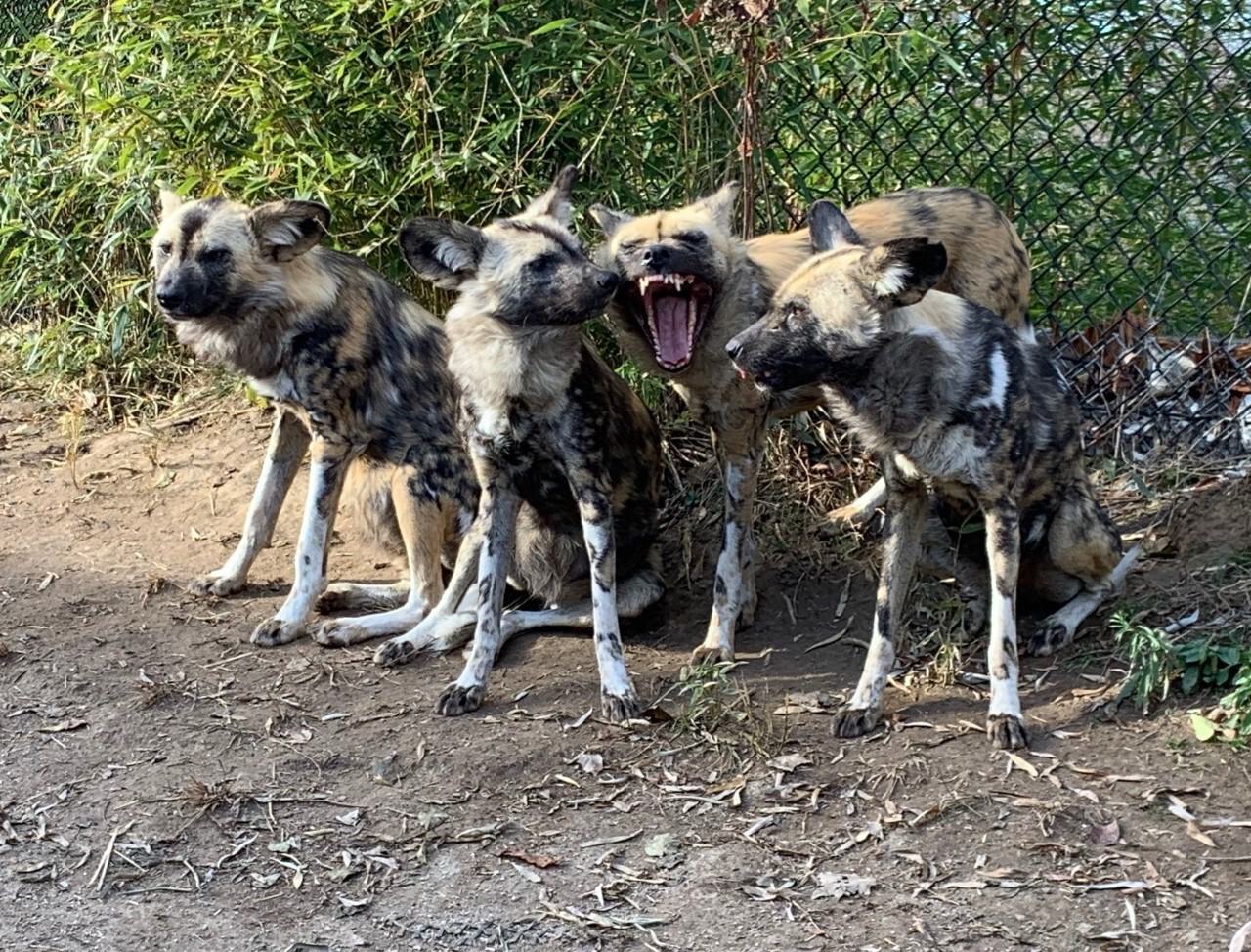
The African Painted Dog—also known as the African Wild Dog—is a beautiful, powerful, and unique species that we are privileged to have at the Saint Louis Zoo.
Meet Our Pack
The Zoo has a pack of four dogs, and they are related to one another. Betty is our golden girl who is the easiest to spot out of the pack. She has the most gold color coat overall and has a large blocky head. She is 10 ½ years old and is sister to Mazie. Mazie has a dark nose that leads up to the top of her eyes, a thin black stripe down the middle of her face, and lots of white splotches throughout her coat. She is the mother to 9-year-olds Makini and Saka. Makini has the darkest coat overall, with a thick black stripe down the middle of her face. Saka is our only male in the pack, is the largest overall, and has that same thick black stripe down the middle of his face but with a white diamond shape on his forehead.
African painted dogs range from around 50 to 62 pounds, have individually unique coat patterns and colors, and range in their size depending on where they live in the wild. They have a strict carnivore diet, and their premolars are much larger than other canids, which allows them to consume large amounts of bone. The African painted dog is famous for their large, rounded ears and tail tips that look like they are painted white.
Painted dogs have specialized social structures and can be found in packs of two to 40 individuals. Each pack is dominated by a breeding pair: the alpha male and female. They have a submissive-based hierarchy which means dominance is established without fighting, as packs want to limit injury for their survival. Packs hunt cooperatively together, will share food and will also assist older, weak or ill members. Painted dogs are elite hunters, hunting at dawn and dusk, with each dog in the pack having a specific job during the hunt. They can run up to speeds of 44 mph and will spread out to surround the prey, which confuses them and prevents them from many escape attempts. Social interactions are common between dogs throughout the day and during a hunt. They communicate by touch, body language (such as ear and tail placement), and a wide range of vocalizations.
We have an overall calm and cohesive pack at the Zoo. Each day starts with a greeting ceremony of wagging tails, excited yips and bowing toward each other. Keepers use enrichment and different feeding strategies that give the dogs challenges and promote cooperative techniques that help to strengthen their bond every day. One of our favorite enrichment challenges we offer the dogs is a pig carcass once a month, attached to our long zipline. Providing a carcass serves three main purposes:
- It is a novel food source that provides variety in their diet and improves dental hygiene.
- It promotes physical exercise like running, jumping, and pulling.
- It mimics eating strategies in the wild and serves to strengthen the social bonds within the pack by asking them to work together to pull it down.
At the Zoo, visitors can witness the dogs sharing a large meal and then resting together afterward, which are all important natural behaviors that wild packs would do in the wild.
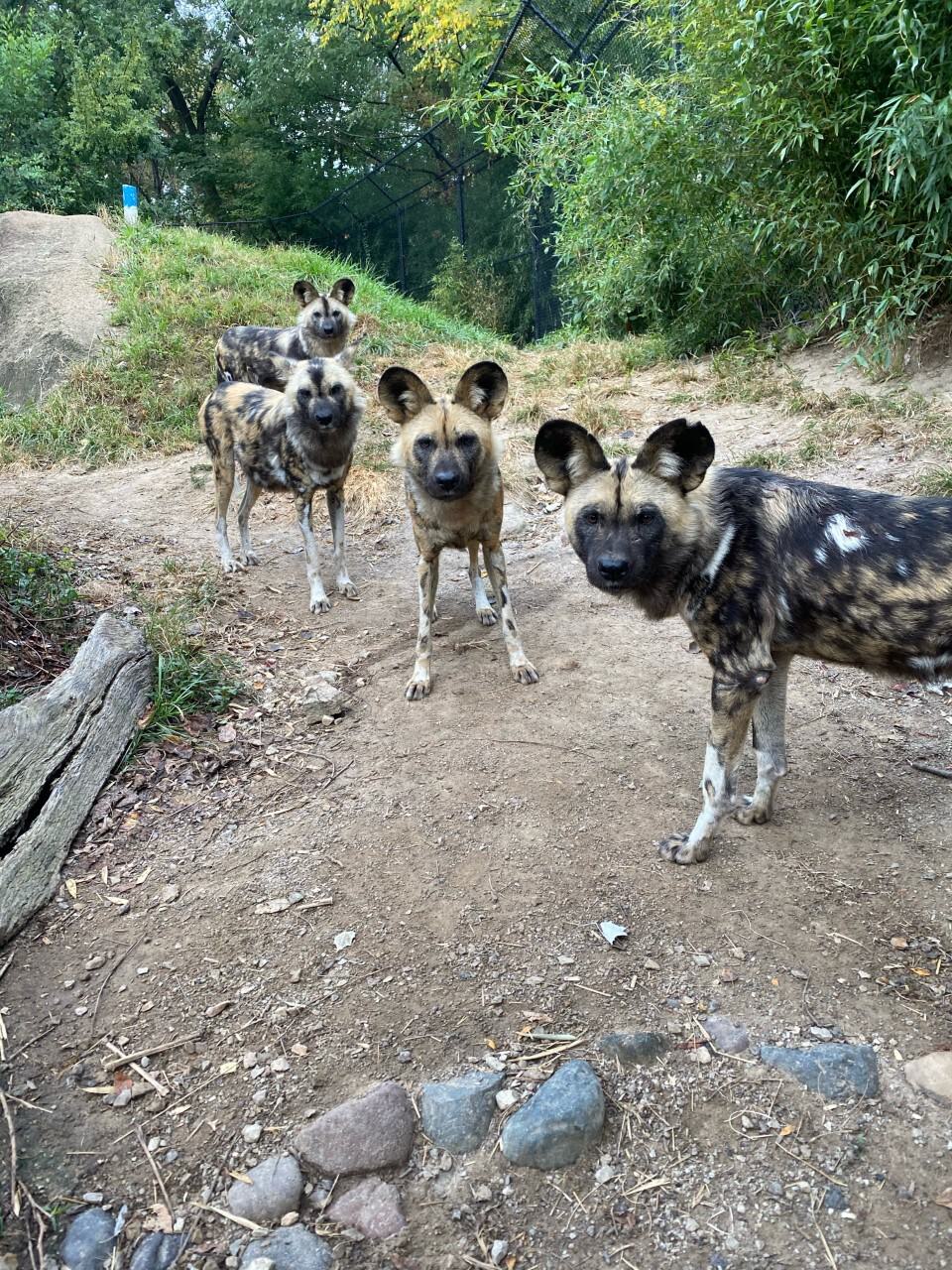
African Painted Dogs Need Our Help
African painted dogs are listed as the most endangered carnivore in South Africa, and the second most endangered carnivore on the African continent. There are between 6,000 and 7,000 painted dogs left in the wild, and surveys show that they have lost at least 90 percent of their historic range. The main threats that African painted dogs are facing in the wild are habitat loss and fragmentation. Conflicts with humans, particularly livestock farmers, are also a common driver of the large predator population decline.
The Saint Louis Zoo has participated in the Association for Zoos and Aquariums (AZA) Species Survival Plan (SSP) for painted dogs by housing this pack since 2015. With this group, scientists at our Zoo have conducted behavior observation studies, an extensive echocardiogram study and a hormone assessment to further knowledge about this species to assist conservation efforts. Through the work of our partner, the Botswana Predator Conservation Trust, we endeavor to minimize or eliminate the human/painted dog conflict by learning more about scent-marking behavior in this species, as well as developing laboratory-synthesized compounds that mimic natural scents that will keep painted dogs away from areas where conflict with humans will be most likely. By visiting and supporting the Saint Louis Zoo, you are supporting our efforts, our African painted dogs here at the Zoo, and their wild counterparts. Visit Saint Louis WildCare Institute Botswana Center for African Painted Dogs to learn more.
Red panda
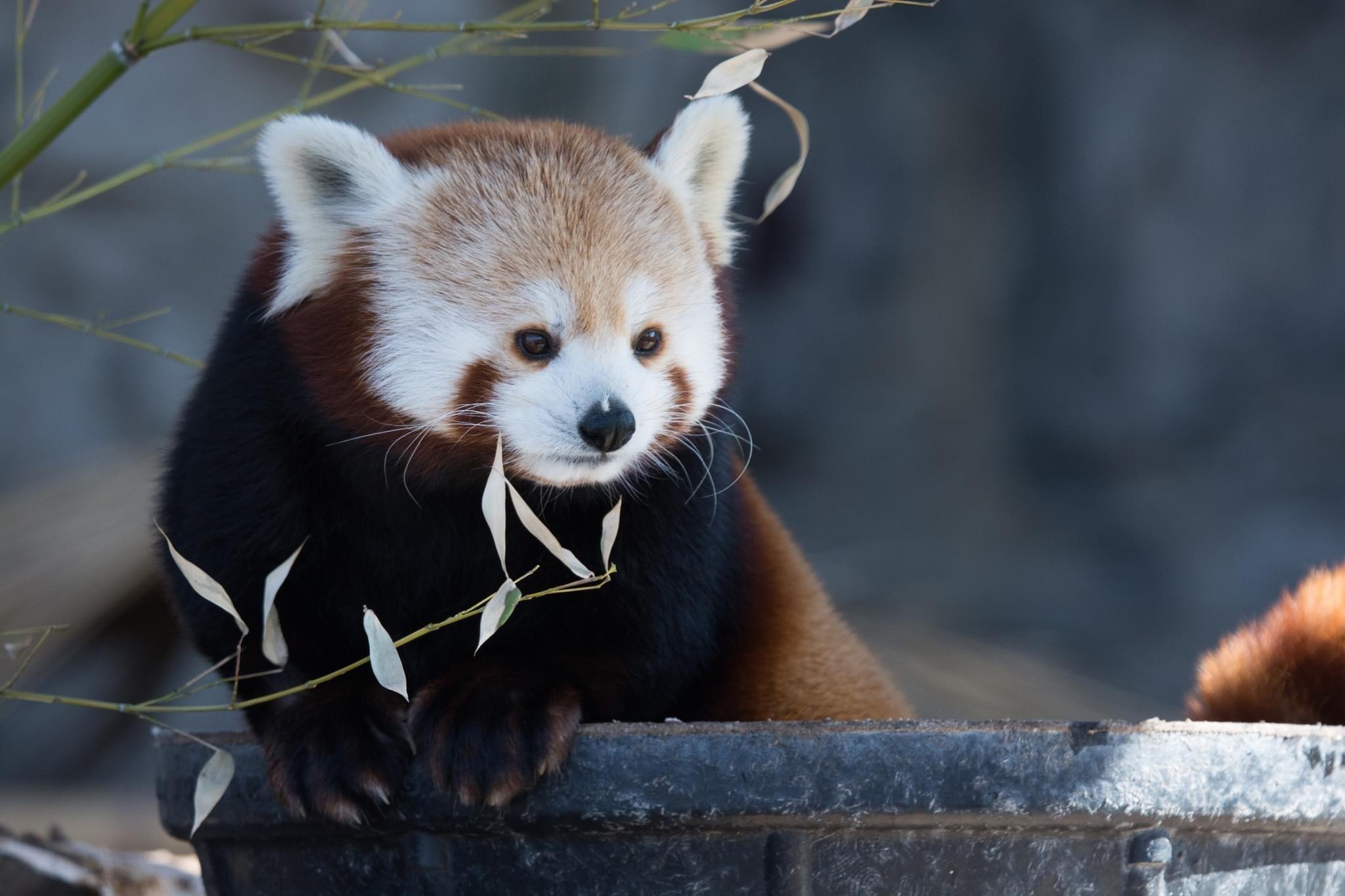
We currently have two red pandas at the Saint Louis Zoo! Pete, soon to be a 12 year old male, and Winnie, soon to be a 9 year old female. Pete and Winnie came to us in 2014 and 2022, respectively. Both moves were made at the recommendation of the AZA SSP for red pandas.
Red pandas are actually the first pandas! Red pandas were discovered almost 50 years before the giant panda and actually share no relation with each other. The word panda likely comes from the Nepali phrase “nigalya ponya,” which means “eater of bamboo.” The only common trait that these two species share is that both of their diets consist of mostly bamboo. Their amazing adaptations also include a long bushy tail that they use for balance and warmth.
Red pandas are excellent climbers and spend most of their lives in trees, where they sleep and sunbathe. Their arboreal life adaptations include semi-retractable claws to securely grip branches while navigating around their forest homes, and a modified wrist bone which is perfectly adapted for grasping bamboo stems while they eat the leaves. Additionally, their flexible ankles enable them to climb down trees headfirst, enabling great agility to move quickly if necessary.
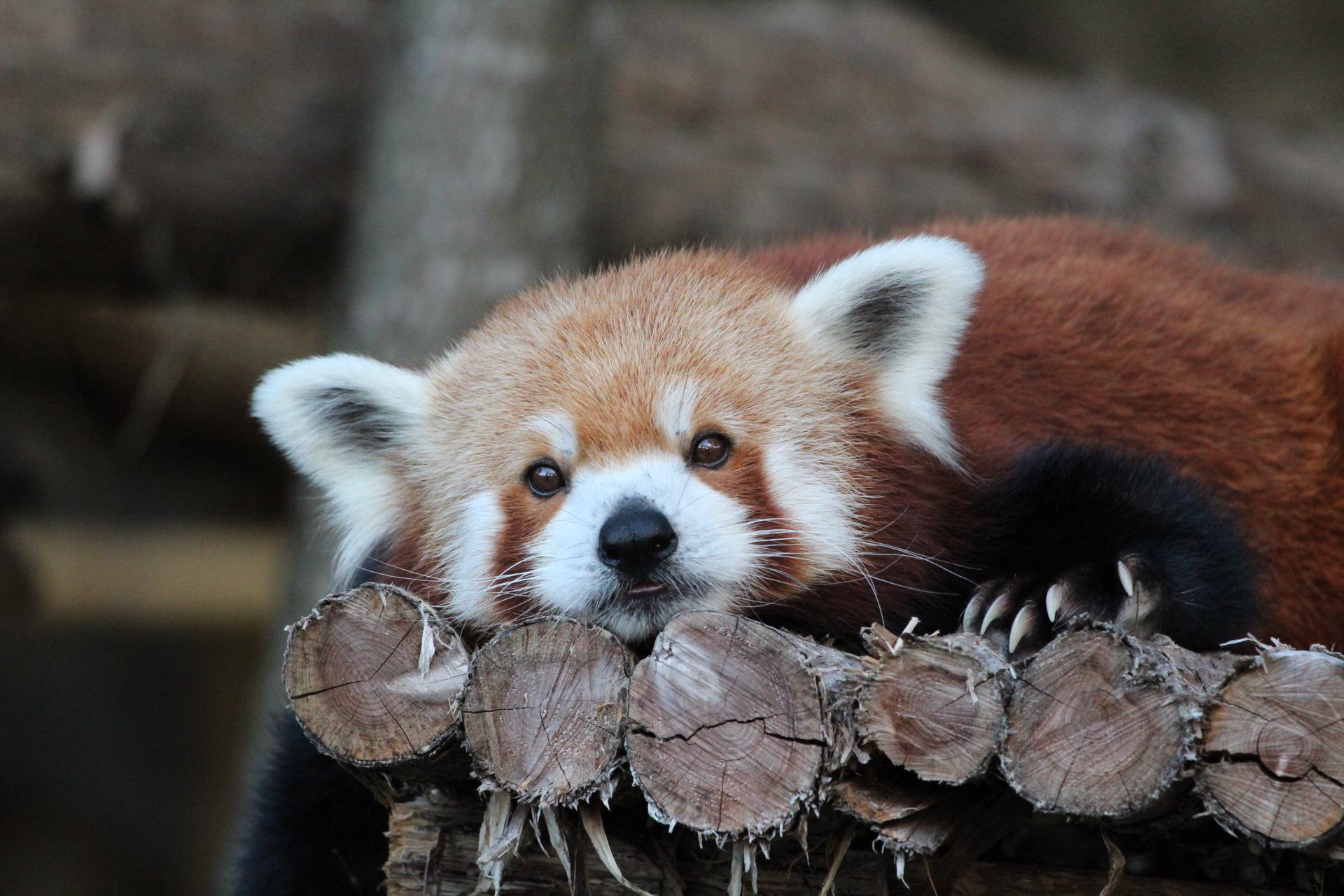
Over the past 20 years, red panda populations have declined by nearly 50%, with as few as 2,500 red panda left in their wild montane homes from factors such as habitat fragmentation, the illegal pet trade, and the loss of resources found in their forest habitat.
Bali myna, Leucopsar rothschildi
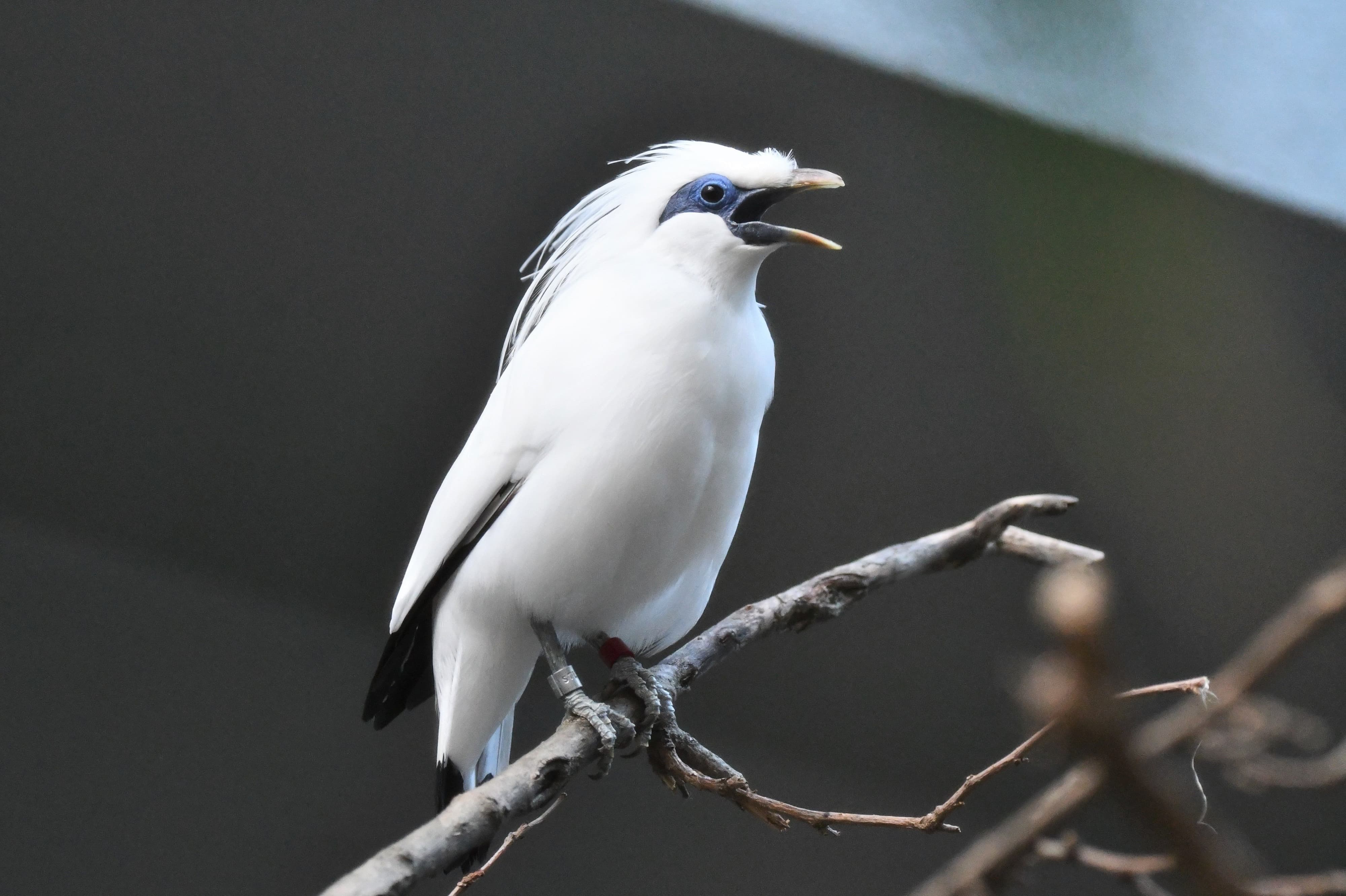
Species Survival Plan
The beautiful Bali myna is endemic to the island of Bali in Indonesia. “Myna” is the Hindi word for “starling."
We currently have five Bali mynas at the Saint Louis Zoo, and they are part of the Species Survival Plan Program (SSP). The Bali SSP works to maintain a genetically diverse population across AZA-accredited zoos. The Bali myna is critically endangered in its native range, with only about 100 remaining. Groups like the one at the Zoo help not only educate people about these amazing starlings but also protect the species from the threat of extinction.The Bali myna is the national bird of Bali, and they are talented singers and mimickers. The decline of the population of these unique birds is due to trafficking for the pet trade and habitat loss. Island species are disproportionately impacted by human changes to their habitats since they tend to have small ranges to begin with and nowhere else to go. In the case of the Bali myna, their beautiful songs and attractive plumage are desirable to illegal pet owners.
Horned guan, Oreophasis derbianus
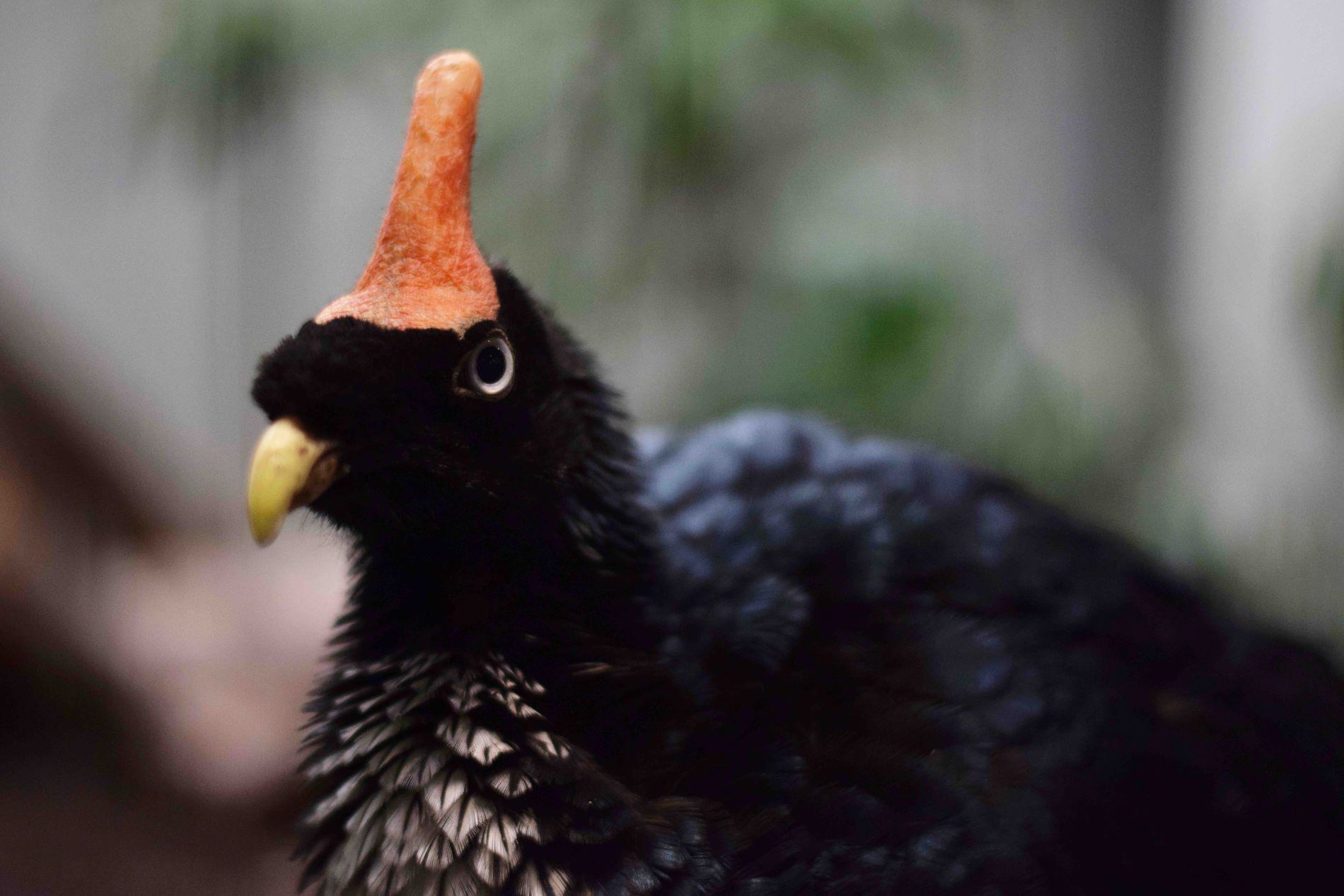
Up in the Clouds
The horned guan is native to the cloud forests of Central America in Mexico and Guatemala. Cloud forests are special because they tend to occur at high elevations and have high levels of clouds and precipitation. Cloud forests are the cooler cousin to rainforests and tend to be cooler, rainier, and more humid than surrounding lowlands. Because of these unique features, cloud forests are home to lots of rare species of orchids, mammals, amphibians, and birds. The horned guan is endangered in its native range largely due to uncontrolled land use and destruction of its cloud forest habitat.
Obi Guan Kenobi
Obi was hatched here at the Saint Louis Zoo in 2016 and will celebrate his seventh birthday with us in June. Some of his favorite foods include grapes and avocado. He is a spunky guy and is often as curious about guests as they are about him! Obi’s mom, Sierra, is currently outside in the Bird Garden.
Party Hat
Horned guans sport a bright red horn that looks like a small birthday hat. This horn grows and merges from two small bumps at the time they hatch until they reach about two years old. The horn is covered with bright red skin that likely serves as a beacon of health to other guans. These endangered birds are in the Cracid family and live in cloud forests at high elevations in Mexico and Guatemala.
Black rhino
Black rhinos once roamed over much of the African savannah and grasslands in the early 1900s. It is estimated that before 1970 their population numbered over 65,000. By 1993, that number had decreased to only 2,300 individuals – a decline of nearly 96%. Black rhinos were brought to the brink of extinction due to poaching for their horns and skin as well as the decline of their natural habitat. They were officially listed as “Critically Endangered” by the International Union for Conservation of Nature (IUCN) in 1996.
Today, thanks to concerted conservation efforts throughout Africa, the black rhino population has increased to more than 6,000. Some of these efforts include relocating vulnerable black rhinos to protected nature reserves and National Parks across Africa. Although their population is slowly increasing, illegal poaching continues to be a huge threat to black rhinos today.
The Saint Louis Zoo supports The WildCare Institute Center for Conservation in the Horn of Africa. It was established to provide research and education programs for Horn of Africa wildlife for decades. In recent years, our support has evolved to include the Somali wild ass, the African elephant and the black rhino.
American red wolves
American red wolves are only found in North Carolina, but they are native to many eastern, southern and midwestern states, including Missouri! Sadly, there are less than 20 American red wolves left in the wild.
In the 1970s, American red wolves were so endangered that biologists thought the only way to save them was to bring the wild wolves into Zoos. They could only find 14 left in the wild and brought them into human care.
In 1987, American red wolves were reintroduced to the wild in North Carolina. This was the first wolf reintroduction program in the world. The Yellowstone wolf reintroduction program began in 1995, and the Mexican wolf reintroduction program began in 1998.American red wolves are always born in April or May, whether living in human care or the wild. Sometimes, zoos and biologists work together to foster puppies born in human care into wild dens. Mother wolves in the wild readily accept the new puppies because of their strong maternal instincts.
Coquerel's sifaka
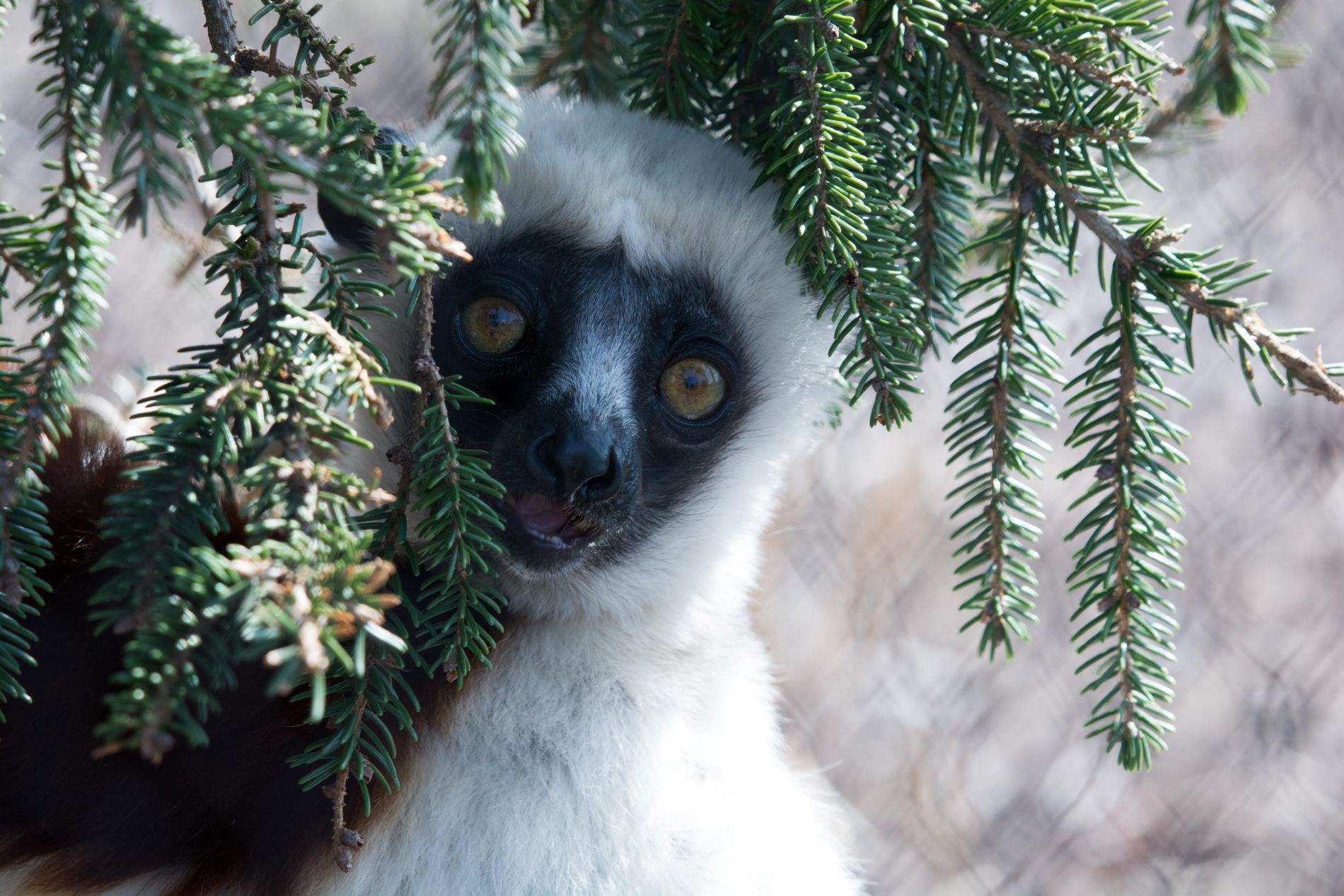
Coquerel’s sifaka is a species of lemur that has an amazing leaping ability! They can easily leap 30 feet between trees using just their strong legs to propel them. Sifakas are vertical clingers and leapers, meaning they jump and leap sideways instead of forward like other lemurs.
Like all other lemurs, Coquerel’s sifaka is endemic to the island of Madagascar, meaning it’s the only place in the world where you can find a sifaka in the wild. Unfortunately, the species are critically endangered and their numbers in the wild are decreasing because of farming, deforestation and the illegal pet trade. The Zoo supports the conservation of the species by caring for two pairs of these special lemurs, including one of the oldest Coquerel’s sifaka, Constantine, who is 33 years old and still leaping here at the Zoo.
Western lowland gorilla
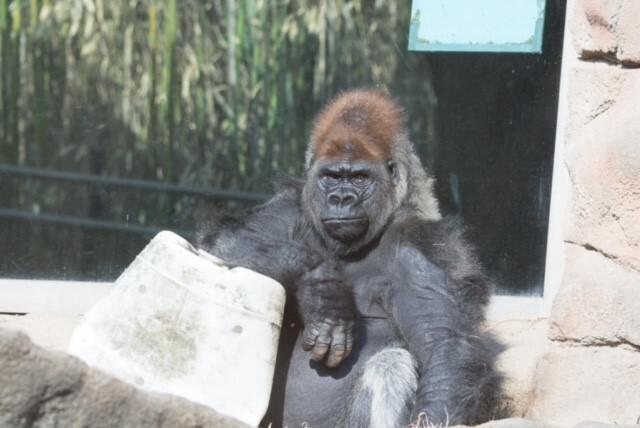
This center is an evolution of the WildCare Institute’s multi-year support of the Goualougo Triangle Ape Project (GTAP) in the Republic of Congo. The goal of the GTAP is to develop conservation policies and local leadership to ensure the long-term survival of chimpanzees and gorillas in the Congo Basin.
For 20 years, the GTAP has implemented a successful research program that includes documenting behavior, monitoring great ape health and examining ape population dynamics within the changing Congo Basin landscape. The GTAP also partners with Congolese researchers in capacity building to develop their skills to make significant conservation impacts for great apes.
Our Zoo primate keepers use repurposed materials whenever we can as enrichment items for our apes! This ranges from PVC pipes, cardboard boxes, plastic kegs, trash cans, paper bags, plastic bottles and more. This is just one of the ways we try to help our environment which in turn helps endangered species, like gorillas.
Herpetarium
The Charles H. Hoessle Herpetarium is home to a number of reptiles and amphibians from around the world, many of which are listed as endangered in the wild.
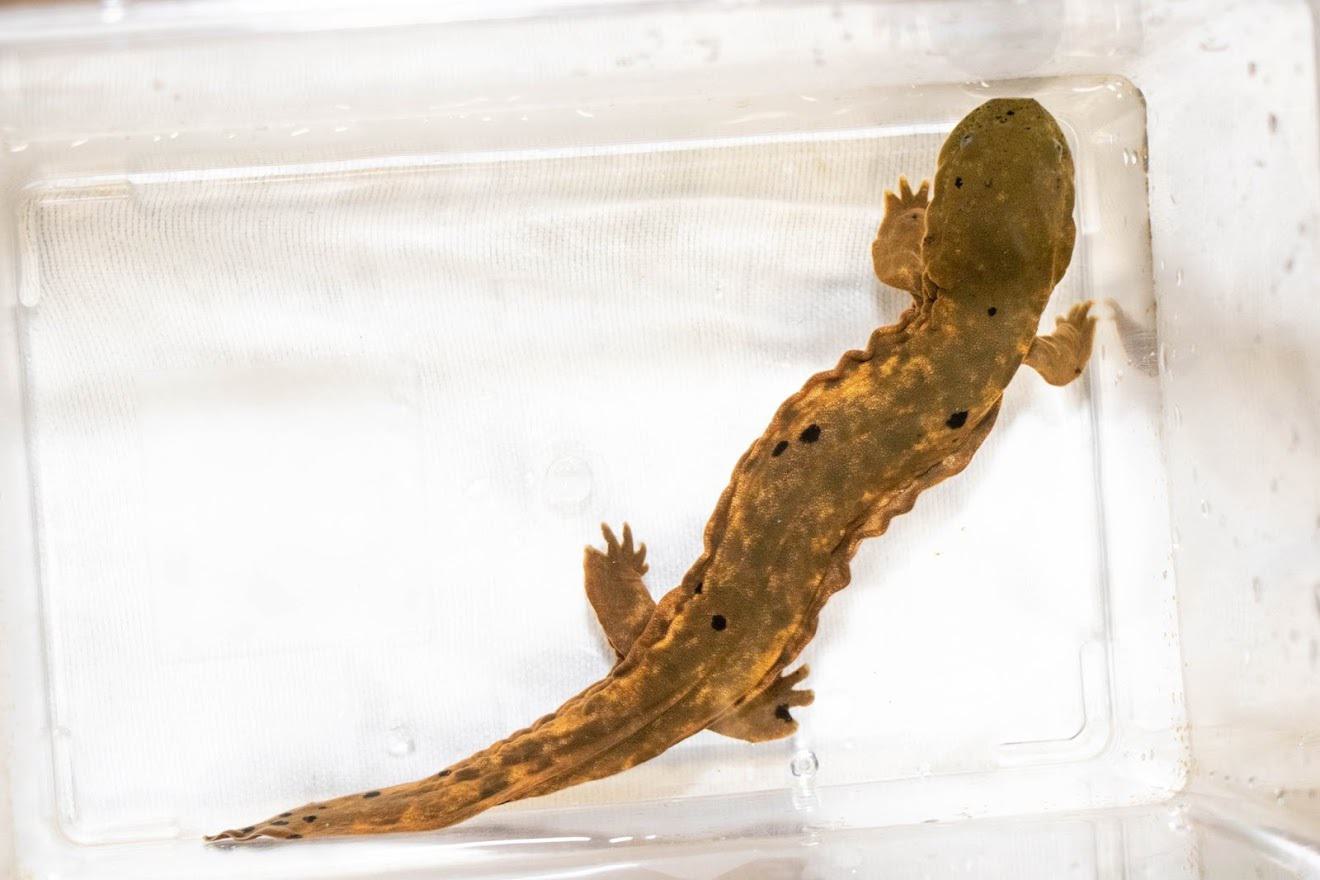
Ozark Hellbender
The Ozark hellbender is a fully aquatic salamander. With a flattened body, fully developed legs and an oar-like tail, these salamanders move easily through water and walk against river currents with little resistance. Hellbenders have natural camouflage thanks to their brown body with black splotches, which are perfect for blending in with river rocks and gravel. The Ozark hellbender is native to the rivers and streams of Missouri.Through the Saint Louis Zoo WildCare Institute Ron and Karen Goellner Center for Hellbender Conservation, we support the reintroduction of Ozark and Eastern hellbenders back into their natural habitats. We have released more than 10,000 zoo-reared hellbenders with our partners: the Missouri Department of Conservation and the U.S. Fish and Wildlife! Recently, the Zoo has learned that those released hellbenders are successfully breeding in the wild. 10 years ago, it was likely the species would be extinct within our lifetime. With this conservation program, it's estimated the hellbenders have been given an additional 30 years time of survival.
Armenian Viper
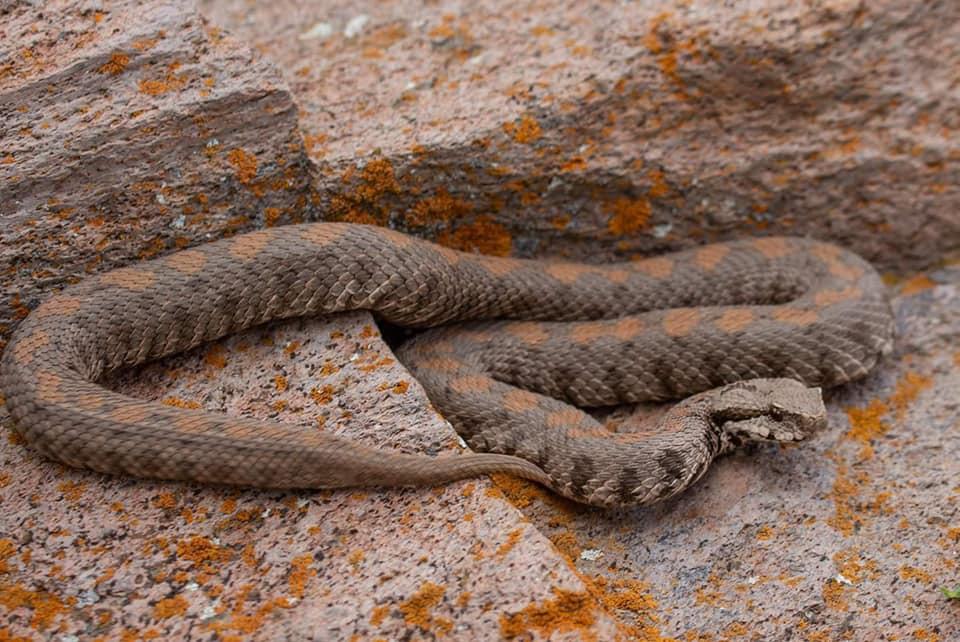
The Armenian viper is part of a group called "mountain vipers” and is native to Armenia. Populations have drastically declined due to habitat loss and the collection of their venom, which can be used as a blood-clotting agent. The Saint Louis Zoo WildCare Institute Center for Conservation in Western Asia has become a leader in captive work with mountain vipers. The Zoo team has conducted research over the past decade in Armenia on spatial ecology and population dynamics. This research has helped expand the boundaries of national parks as well as formally protect habitats in Armenia. Additionally, the Zoo has opened a facility in Armenia where these vipers are bred and reared, along with other endangered vipers, with the goal of releasing them into the wild.
Grevy's zebra
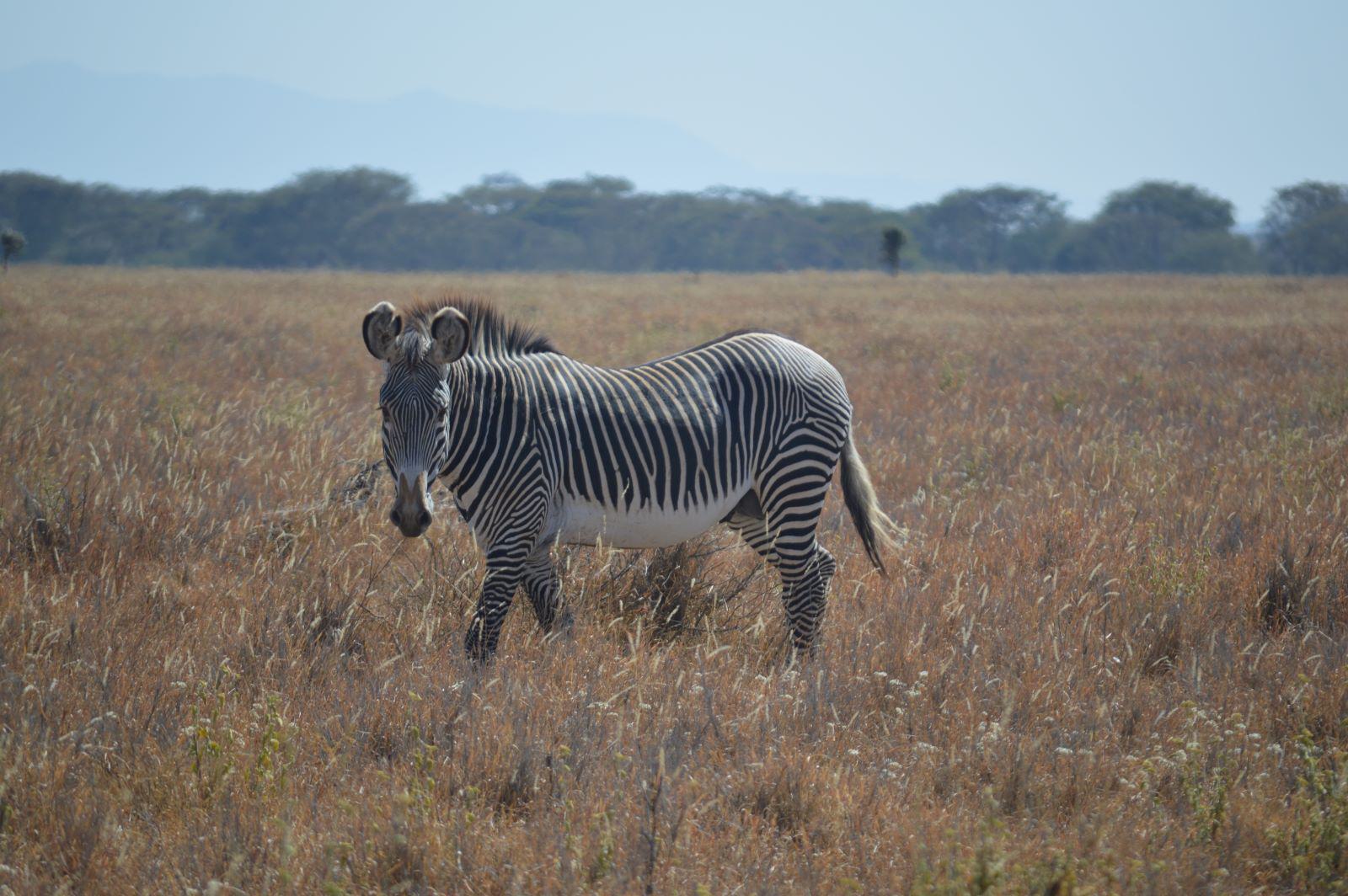
Grevy’s zebras are endangered due to grassland degradation and persistent drought. The species can go up to five days without water but needs a lot of grass to survive. They will spend 60 to 80 percent of their day grazing on grass. During droughts when the grasslands are bare, Grevy's Zebra Trust will feed hay to the wild zebras to sustain them through the drought.
Grevy's zebras are the largest of the three zebra species in Africa and have the thinnest stripes. Every individual zebra has a unique stripe pattern. Every two years, the Grevy's Zebra Trust facilitates a photo census called the Great Grevy’s Rally to count the zebras in northern Kenya using their unique stripe patterns to identify them. The Saint Louis Zoo team travels to Kenya and participates in this photo census every two years!
The Zoo has had a longstanding commitment to the conservation of Grevy's zebra and has celebrated the birth of more than 30 Grevy's zebra foals at our Zoo in the last five decades. These births are part of the Grevy’s Zebra Species Survival Plan, a collaborative program among all of the member zoos of the Association of Zoos and Aquariums.
Speke's gazelle
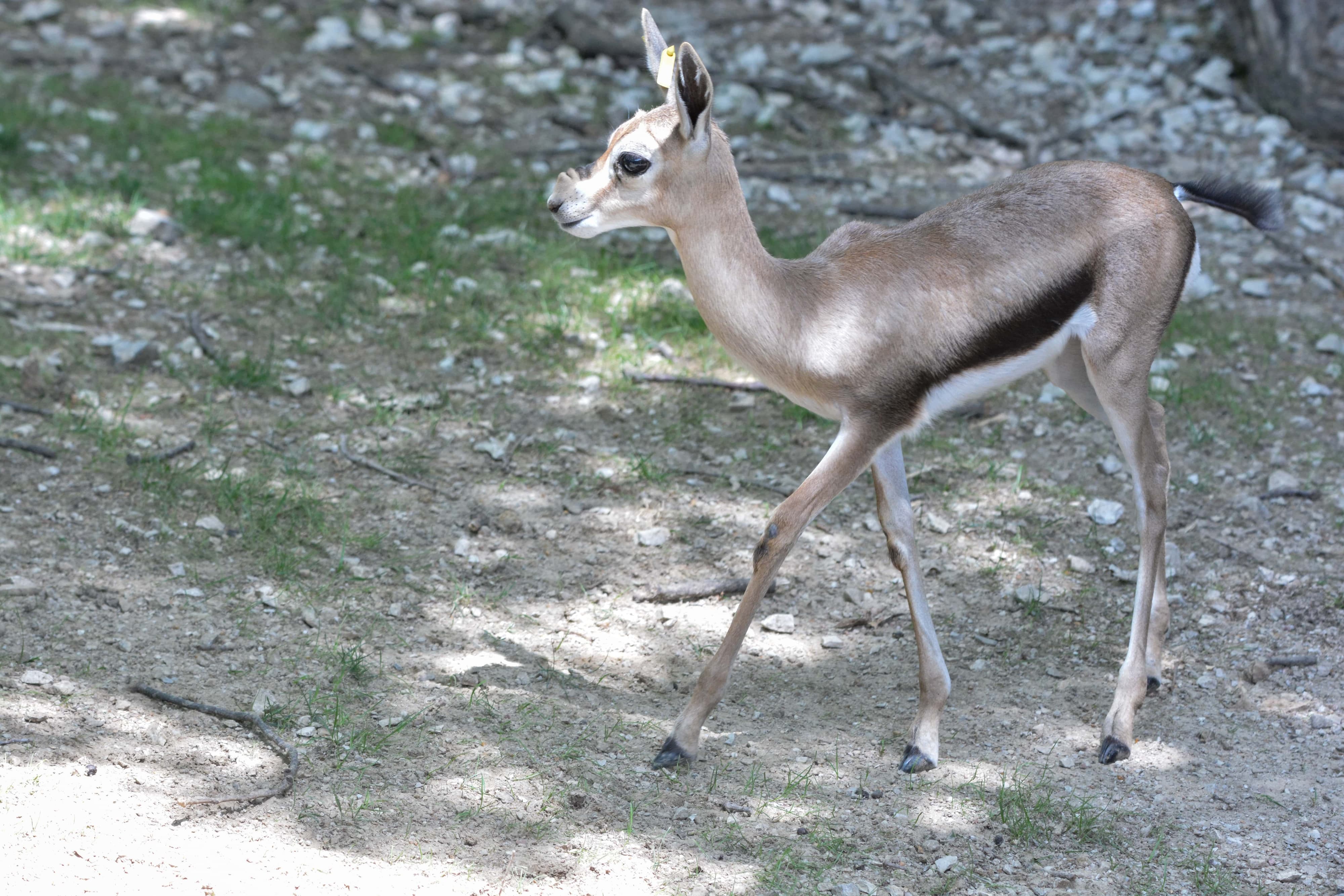
Speke’s gazelles are among the smallest gazelles, reaching a maximum shoulder height of only about two feet. Males weigh up to 40 pounds, while females range from 24 to 35 pounds. They have unique noses that amplify their loud alarm calls when excited or in distress. By inflating the loose skin on the top of its muzzle, the gazelle can increase the volume of its call, which resembles a honking sound. Their alarms help keep the whole herd safe.
Speke's gazelles are social animals that live in two different types of herds. One is composed of an adult male with his harem of females, with which he breeds. This family herd typically has about 12 individuals. The second type of herd is the bachelor herd, which is made up of juvenile males and young adult males that do not have harems (yet).
There have been over 200 calves born at the Zoo with the most recent birth of female Dottie. Through the Association of Zoos and Aquariums, the Zoo is working to increase the population of this species in human care. Staff at the Saint Louis Zoo have managed the AZA program for Speke’s gazelles for decades, and the Zoo is a proud leader in their care and breeding.
Addax
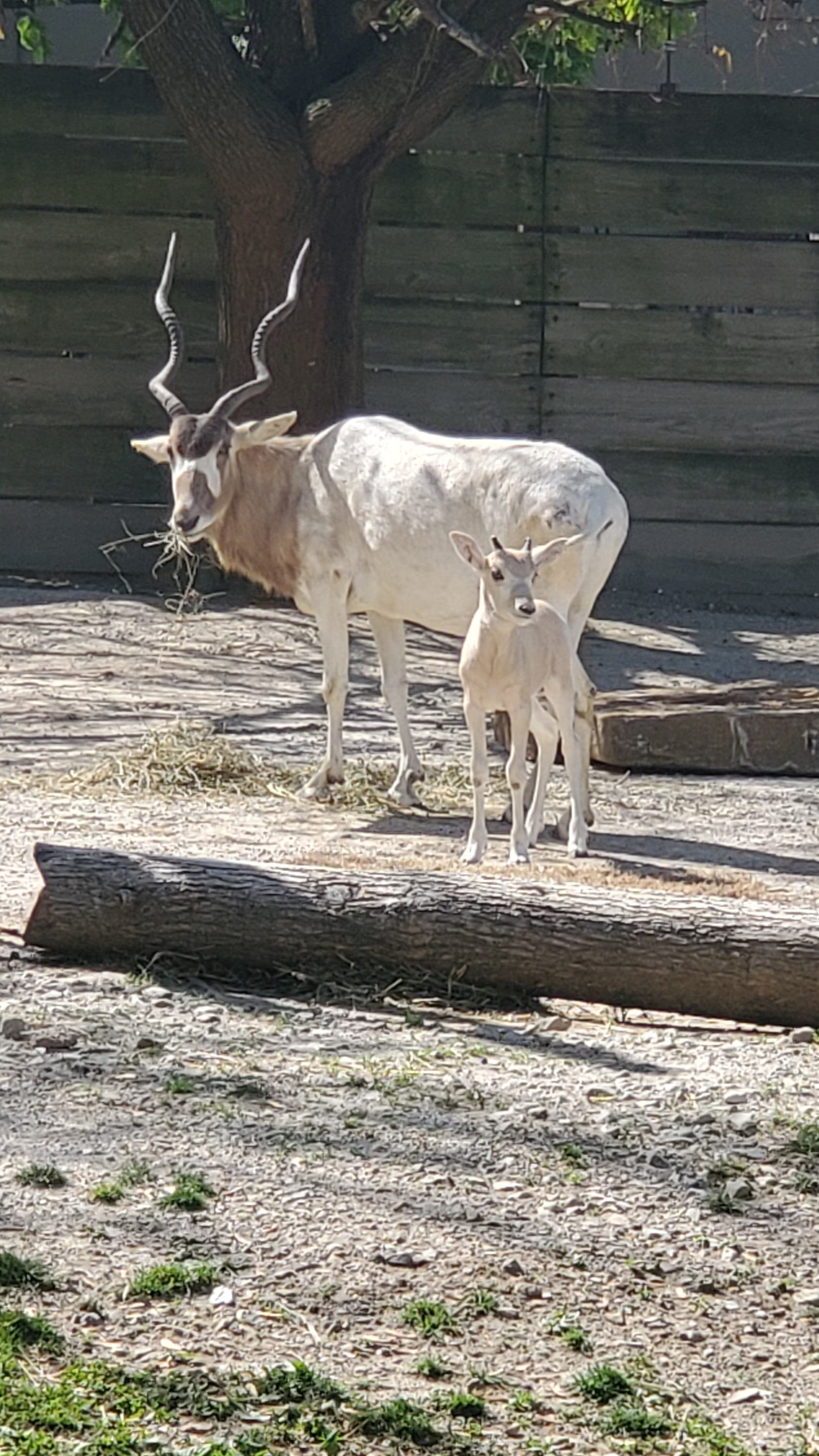
Addax are large antelopes endemic to the Sahara and are well-suited for desert life. Their white haircoats reflect the rays of the scorching desert sun, and their splayed hooves permit easy travel on the sand. Their hooves also release a scent on the ground that helps an addax find its herd if separated. Addax rest during the warmest hours of the day and take shelter near bushes and rocks. They also may dig shallow holes for themselves in the cooler dirt.
In recent years, the number of wild addaxes has plummeted to near extinction due to overhunting, political insecurity and disturbance within their habitat by oil exploration threatening their existence. The Zoo supports this critically endangered species through a number of efforts, including by participating in The Association of Zoos and Aquariums Species Survival Plan for the Addax. The Zoo currently has a one-month-old calf named Maximus, or Max for short, in Red Rocks.
The Zoo also supports the Saint Louis Zoo WildCare Institutes Saharan Wildlife Recovery Center. The program works with a variety of partners, like the Sahara Conservation, to save the addax. Learn more about the Saharan Wildlife Recovery Center and the work that they do.
Partula snails
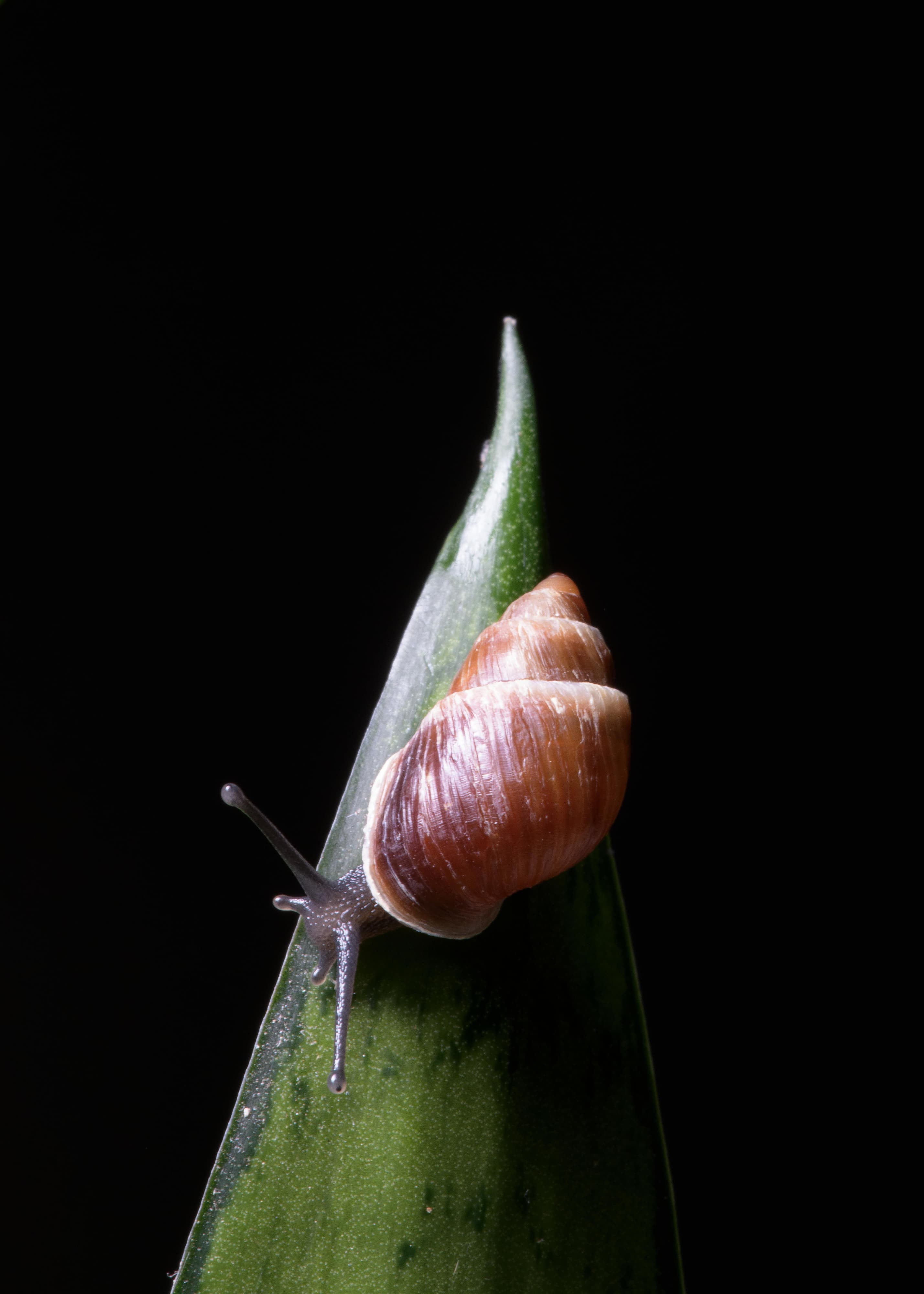
Partula snails measure 1 to 2 centimeters long and are native to tropical Pacific islands. They feed on decaying vegetation and small plants. This species is still considered extinct in the wild, but there is hope that they may once again thrive in their native habitat.
Partula snails once populated the South Pacific Islands, from Palau to the Society Islands, including Tahiti and Moorea. These snails, however, experienced a devastating decline when the predatory rosy wolf snails (Euglandina rosea) were introduced to the islands in the 1970s as a form of biological control. In the 1980s, scientists began to notice the rapid decline of Partula snails and zoos began to create ex situ (protecting a species outside its natural habitat) assurance populations. This year, the Zoo has raised 2,500 partula snails for reintroduction.
In 1990, the Zoo initiated the Partula Species Survival Plan (SSP) to manage the Partula populations on a national scale. Since 2012, both the species coordinator for the Partula SSP and the regional studbook coordinator have been Zoo staff. The Zoo also works closely with the International Partula Programme Conservation, coordinated by the Zoological Society of London, which is involved in breeding programs for many Partula species in 17 zoos, together with fieldwork in the species range. Through this cooperative effort, the WildCare Institute has provided funding for staff, equipment for field surveys, the construction and monitoring of predator exclusion reserves, and reintroduction efforts.
Zoological Manager of Invertebrates Kayla Garcia traveled to Tahiti in April to assist in reintroducing nearly 3,000 partula snails into their native habitats.
Monarch butterfly
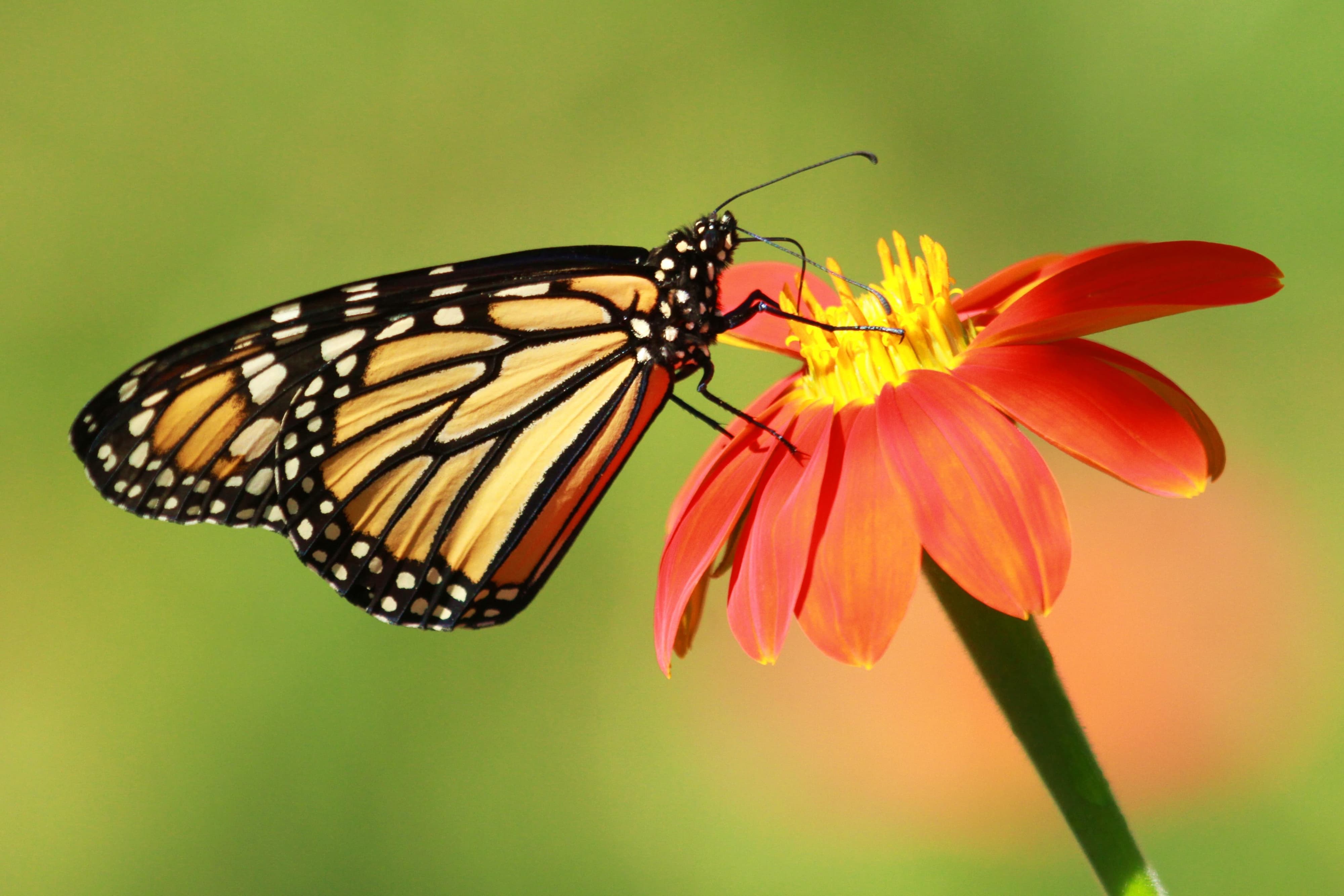
Monarch butterflies are some of the most easily recognized butterflies in the world. The monarchs in North America have one of the longest and most unique butterfly migrations, with some eastern monarchs traveling up to 3,000 miles one-way! While monarchs only travel to their overwintering site once, the somehow manage to return each winter to the same relatively small area in the central highlands of Mexico or the Pacific coast of California. Monarchs use the sun to help orient themselves, but they are able to navigate back to a specific location.
In 2022, the Monarch butterfly was listed as endangered by the International Union for the Conservation of Nature (IUCN) on the Red List of Threatened Species. This affects not only the species but the human population as well. Monarch butterflies are an important participant in pollinating plants in our ecosystem.
The Zoo helps this species, along with many other endangered butterflies, by encouraging guests to plant native milkweed. Female monarchs depend on milkweed to lay their eggs and feed their caterpillar larvae. While other flower species can serve as nectar sources for butterflies, only milkweeds play host to monarch caterpillars enabling the monarch population to grow.

